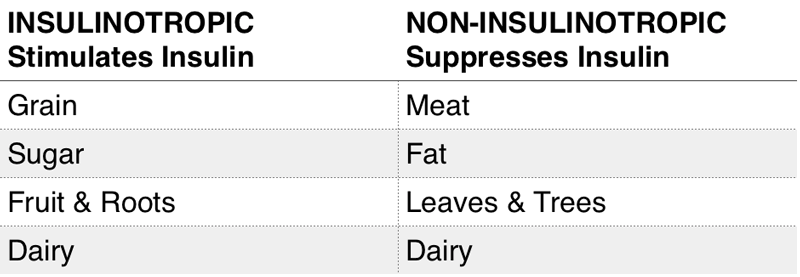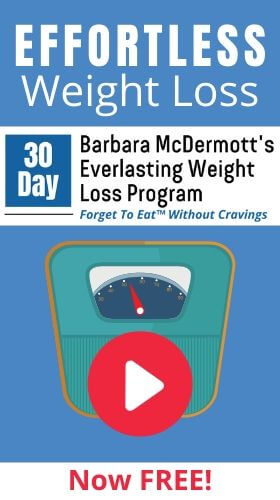What if you saw a headline that read, “Eat Red Meat to Defeat Diabetes” or “Eat Red Meat to Beat Obesity”? Would you believe it? Is red meat healthy?!
I never would have believed it.
Believed.
What does “believing” have to do with anything?
Someone once said to me, “I’ve got to believe that a plants-based diet is healthiest.” And I had heartily agreed! I believed it.
Plants-Based Diet Flaw
Funny, but not ‘ha ha’ funny, more like ‘what-the-what!?!’, I had been that family. The plants-based diet family.
It wasn’t until my daughter, at age 16, was ushered into the insulin injection dependent Type 1 Diabetes that we began eating red meat. Most are shocked when they hear this because “everyone knows diabetics are at greater risk for heart disease!”
Why would you start eating red meat when your daughter is now at even greater risk for not just heart disease, but cancer and Alzheimer’s too??
As I learned the true underlying cause of atherosclerosis, and cancer and brain degenerative diseases like Alzheimer’s, it became crystal clear that my plants-based diet was exactly what I had to re-think.
And it begins with the question, “What is a plants-based diet?”
The simplest, most fundamental clarification is that a plants-based diet is a carbohydrate-based diet. It’s certainly not a fat-based diet nor a protein-based diet.
‘Based’ implies largest foundational component. Certainly, a few plants supply fat (coconuts and avocados) and some plants supply a bit of protein (quinoa, spinach, legumes) but along with the small amount of protein delivered, they more often than not deliver an even greater amount of carbohydrate. A plants-based diet has carbohydrate as it’s largest component or foundation.
Then, does that make a ‘meat-based’ diet a protein and fat based diet?
Well, yes.
The directive to ‘base’ your diet on plants implies that animal foods are less optimal than plant foods. This is where I had existed.
And this is where many health challenged individuals live because the world is saying…
Eating Plants = Good.
Eating Animals = Bad.
Is Red Meat Healthy Or Bad For Diabetics? | The Plant Based Diet FLAW
Watch the video below to better understand why red meat should be celebrated and not feared…
The Hard Lesson Of Meat Fear
My former adherence to the plants-based directive pulled me, and my daughter, far off course.
And lead us to cravings, lethargy, brain fog, weight gain and dips into depression as her daily grind.
Forgoing meat because of fear or principle, the human body doesn’t have a built-in compensation mechanism triggered by our moral compass. Just because your brain and heart justify your actions doesn’t mean your body won’t suffer for it. That’s the hard lesson I learned.
Is Red Meat Healthy? – Metabolic Facts
Each of us is completely responsible for our own health. We choose how to eat, what to eat, and why to eat multiple times daily. If you are in a health situation or are trying to resolve or solve a health crisis, it’s imperative to have the facts.
And I’m not talking about the philosophical facts or nutritional facts so much, but the non-changing metabolic facts. The universal internal mechanisms that, like gravity, despite whether we ‘believe’ in them or not, will indeed have us meeting a hard surface every time we try to defy it.
Question: What drives belly fat? (Atherosclerosis and Cancer, too)
Answer: Insulin.
(Belly fat is excess blood sugar. Insulin is responsible for shuttling the blood sugar into adipose tissue where it gets converted to fat. )
Humans wear blood sugar around their waist because the fat cells encircling our middle are especially sensitive to insulin. Cancer cells are especially sensitive to insulin, too.) Learn more about becoming Cancer Smart.
Question: What stimulates insulin?
Answer: Blood Sugar.
(Insulin is only secreted in response to blood sugar rise. Any rise. Every rise. Every time. Everyone’s blood sugar rises, stimulating insulin, especially when they eat, they just might not be aware of it.)
Question: What makes blood sugar?
Answer: Digested carbohydrate.
Deductive reasoning tells us to eat foods that make or raise blood sugar the least and therefore stimulate insulin the least…..right?
Insulin is like gravity. You can’t see it, but it generates the same result every single time. It ‘holds things together’ for you and keeps your body grounded. You just need to know it’s there. Know what it’s capable of. And then use it to your advantage.
All Food Stimulates Insulin.
Instead Of Asking “Is Red Meat Healthy?”, The Better Question Is… “Is Red Meat Insulinotropic?”
Insulinotropic means “stimulates insulin”.
A food is insulinotropic if it triggers your body to secret insulin. Every food is to some degree insulinotropic. However, some are highly insulinotropic and others are considered non-insulinotropic. Non-insulinotropic means they stimulate insulin very little or hardly at all.
Insulin is your growth and fat storage hormone. Insulin, when elevated, actually turns off your body’s ability to burn body fat.
BOTTOM LINE: There is no body fat burning when insulin in up!
It’s Why Losing Weight Is So Hard & Frustrating
Insulin is the real reason why losing weight is so hard. Even if you’re exercising and ‘eating a healthy, plants-based diet’, if you are not aware of your insulin response, you’re probably interfering with or completely shutting down your body’s ability to burn fat without even realizing it. All your effort, goes unrewarded!
And for those who’ve been developing insulin resistance through the years, your body is producing even MORE insulin. That’s MORE body fat lockdown.
You can gauge insulin by your waistline. Consider your belly your insulin belt.
Get that insulin down. Only then can you use your body fat. That’s what weight loss actually is – using or burning up your body fat.
Insulin’s Connection To Heart Disease & Cancer
Also important to know is that insulin thickens blood vessels which elevates blood pressure, contributing to heart disease.
Insulin supports cancer cell angiogenesis, the establishment of its blood supply network to fuel its growth. And what fuel is that insulin-generated blood supply network hauling in for the cancer cell ? Blood sugar. Glucose.
And what foods generate blood sugar or glucose? Carbohydrate.
Carbohydrate Is Glucose
That’s why carbohydrate fuels cancer. You might hear, “Sugar feeds cancer.” What you might not hear is that any kind of sugar which is every kind of carbohydrate feeds cancer.
Protein, to some extent, can feed cancer because it could contribute to blood sugar. This happens when you over-consume protein beyond your body’s present need and any excess protein converts to fuel, glucose.
Whether you are seeking weight loss, reduction of belly fat, safeguarding against cancer, or reversing any of the glucose-related diseases that impact brain, nerve, and heart functioning, less insulin is the winning move.
The List Of Foods That Increase Blood Sugar | Stimulate Insulin vs. Foods That Don’t

INSULINOTROPIC (Insulin Stimulating / Blood Sugar Increasing) Foods
Grain
Grain is the greatest insulin stimulator. That’s because every grain’s basic building block is glucose. It doesn’t matter if it’s refined grain or whole grain. They both digest down to glucose. Your body does not discriminate. So if you are adhering to a plants-based diet, that’s one plant to avoid.
Sugar
Sugar is certainly insulinotropic. Sugar in any form including raw, organic or unprocessed natural honey digests to glucose and ends up in your bloodstream. (See our Natural Sugar Myth post.) Blood glucose triggers insulin.
Fruits & Roots
Both these revered plant foods are insulinotropic. Fruit and root vegetables, regardless of nutrient value or fiber content become insulin-triggering blood glucose. Of all fruits, berries impact blood glucose the least.
Dairy
Dairy is a contrary category. Why? Because different dairy products contain varying amounts of carbohydrate and sometimes problematic proteins. Milk and some cheeses contain significant carbohydrate or sugar (lactose) and protein (caesin). But some dairy products don’t. Those that don’t, fall under the non-insulinotropic heading.
NON-INSULINOTROPIC (Foods That DON’T Increase Blood Sugar or Stimulate Insulin)
Meat
Meat is not insulin stimulating. It’s not insulinotropic. That’s simply because meat is not a carbohydrate. Meat is protein and fat. Recall, protein generates glucose when in excess. It’s wise to consume protein in reasonable quantities. Red meat, beef, delivers less protein than the same amount of white meat, chicken. Red meat also has more of the highest satiety, lowest insulinotropic factor macronutrient, fat.
Fat
Fat is the greatest NON-insulinotropic food. Completely devoid of either protein or carbohydrate, fat does not stimulate insulin. Period. Coconut Oil. Bacon Fat. Butter. Heavy Cream. All these are foods that control blood sugar.
Leaves & Trees
Leaves and trees are the carbohydrate plant foods that are the least insulinotropic. They stimulate insulin the least because they deliver the least amount of carbohydrate. Leaves means leafy greens. And ‘trees’ refers to any vegetable that grows above ground. Leaves and trees are nutrient dense, but carbohydrate light. These plants get the green thumbs up.
Dairy
Dairy, certain ones, are non-insulinotropic. The dairy products that don’t stimulate insulin are the ones that have the highest fat percentage and lowest protein and carbohydrate percentage. Butter and heavy cream are the clear winners. Both are straight fat without any protein or carbohydrate. Cheeses fall into this category too depending on quality and macro-profile. Cheeses are quite diverse! Again, less carbohydrate means less insulin.
You Can Forget About “Is Red Meat Healthy?” Once You Understand Food’s Impact On Insulin
By understanding food’s impact on insulin, your fat storage and growth hormone, you can more clearly see the relationship between food and health. Despite the rules you may have created for yourself (like I once had), if you want to achieve optimal health outcome, aligning your eating principles to the hard and fast universal metabolic principles is imperative.
Sure, you can make up your own rules…..
“If I just eat good carbs” or “I only eat real, whole, organic foods.” or “I eat conscientiously and morally.“ or “I follow a plants-based diet.”
And each of those statements, to some degree, are solid principles of ‘rightness’. However, when your rules aren’t aligned with THE rules, you are the loser.
The Merits of Red Meat
The color red has long been connected with alarm, warning, or danger.
STOP, then proceed with caution.
This association may have had you understandably alarmed over the very idea of ‘red meat’. The author, me, admits to decades of fear over red meat. Back when my children were little many of us moms had been chided to avoid serving red meat to our growing family. We were warned about precocious puberty due to steroid growth hormones given to animals and problems created from residue of antibiotics used to control livestock disease.
I, as a young mother, was afraid to give my three children meat. But, not anymore.
Certainly, conventional meats force-raised on grain, injected with growth steroids, and subjected to inhumane treatment are best avoided for both nutritional and ethical reasons.
But pastured, organic and grass-fed meats are one of nature’s most powerfully health-supporting foods. And color is simply color, not a warning label.
Why Is Red Meat… Feared?
Red meat is called ‘red’ because it is the color red when it is uncooked. White meat is called ‘white’ because it is the color white when uncooked.
Red meat became associated with alarm due to its fat content. Now that you know a bit more about fat, protein, and carbohydrate and their individual impact on the body fat lockdown hormone, insulin, you’ll begin to see food differently.
Fat is not to be feared, but revered!
Too much protein is not necessarily a good thing.
And carbohydrate is the underlying cause of every lousy. Red meat is the terrific combination of lots of natural fat, just the right amount of protein and no carbohydrate. BINGO!
A Closer Look at Red Meat
Red meat is one of the most nutritious foods you can eat. Its components are critical for energy and stamina for both body and brain.
The Key Health Promoting Players of Red Meat (Vitamins, Minerals, Proteins, Fats)
Vitamin B3 (Niacin)
Niacin, an essential vitamin used to turn food into energy. It supports the nervous system, digestive system, and your body’s largest organ, your skin.
Vitamin B12 (Cobalamin)
Cobalamin, is necessary for cardiovascular and cognitive health. Vitamin B12 helps with production of hemoglobin, oxygen-rich red blood cells, and improves nerve strength.
It also helps your body regulate homocysteine levels. Your body creates methionine, an essential protein, from homocysteine, an amino acid that’s naturally produced by your body. Vitamin B12 ensures the homocysteine in your blood gets used up as it should. Unused homocysteine can lead to a build-up which is associated with increased risk of heart attack or stroke. Vitamin B12 cannot be produced by the body and is only found in animal foods.
Selenium
Seeking some fortification and resiliency? Grass-fed red meat delivers selenium, an essential mineral for replenishing your body’s master detoxifier, glutathione. Use this jingle to help you remember, “Glutathione protects my biome.”
Zinc
To boost your body’s ability to handle stress there’s zinc, the essential “resiliency” mineral. You see the word ‘essential’ because your body can’t create it. It’s ‘essential’ that you take in enough from the foods you eat.
Iron
And, of course, there is also iron, another essential mineral that ensures healthy red blood cells and the carrying of oxygen throughout your body to give you the stamina to meet the demands of daily life.
Also worth noting is that the iron in red meat grass-fed beef is the highly absorbable or ‘bioavailable’ form heme iron. The form of iron plants provide is non-heme iron, which is less readily absorbed and put to use.
‘Heme’ refers to protein complex. Think hemoglobin. Animals have blood. Plants don’t. Red meat contains both heme and non-heme iron. Ascorbic acid assists absorption, so a side of Vitamin C-rich broccoli makes a great complement.
Protein
There’s about 20 grams of usable, whole, complementing protein in each serving.
Fat
You get approximately 10 grams of combined, complementing saturated and monounsaturated fats. These’s are natural fats. Real fats. Whole fats.
Saturated fats are stable fats that tend to be solid at room temperature. They’re called saturated fatty acids because all of their carbon atoms are fully ‘saturated’ with hydrogen atoms. Saturated simply means molecularly stable. This is why it is recommended to use saturated fats for cooking. Because of their stable molecular structure they are highly resistant to heat-induced damage.
Foods high in saturated fat are butter, cream, coconut oil, palm oil, and dark chocolate plus naturally fed and raised meats and dairy products from grass-fed cows.
Saturated fat is CRITICAL to cell membrane health. You are comprised of trillions of cells. Fat is essential to those trillions of cells. ESSENTIAL.
Watch Out For Those “Heart-Healthy” Oils
What’s up with all those supposed heart-healthy cooking oils advertised in every magazine?
While real, whole, natural saturated fat fortifies cell membrane integrity, fake or factory-generated fats weaken and compromise cell membrane health.
Avoid “vegetable oils” like the plague. (See “Which Cooking Oil Is Best“. )
Another natural and health-serving fat found in grass-fed beef is CLA or conjugated linoleum acid. A monounsaturated fat, CLA is powerfully anti-inflammatory as it supports immune function, assists asthma and allergy conditions. It fortifies muscles and bones. And CLA has even shown to reverse atherosclerosis.
Yes. You read that right. Fat makes your blood vessels healthier!
What Red Meat Is & Isn’t
Red meat is…..a nutrient dense, real, whole food.
It delivers ample amounts of the essential Vitamin B12 and heme iron, neither of which can be obtained from plants. Cell membrane-supporting saturated fat plus the anti-inflammatory monounsaturated fat, CLA, compliment the readily available protein for body repair and building.
And because of it’s natural fat and protein profile, red meat is highly satisfying and sating, keeping you pleasantly not hungry for hours after.
Red Meat Isn’t Insulinotropic
Meat does not stimulate your pancreas to secrete insulin.
Meat does not stimulate your fat storage hormone. When insulin is low, body fat burning is a Go. Less insulin….and you win.
Meat is comprised of fat and protein without any carbohydrate which makes it an excellent insulin-suppressing food. Meat doesn’t contribute to blood sugar and doesn’t initiate cravings.
Meat is a smart food choice for weight loss, blood sugar stability, cravings curbed, fasting support, and for reversing damage caused by all the carbohydrate-related diseases and conditions. Choose high quality, pastured, and grass-fed as nature intended.
Conclusion… Is Red Meat Healthy?
If you choose to ‘base’ your diet on a category or concept consider a ‘less-insulin’ based diet.
Choose foods that require your body to excrete less insulin. Repeating this food action reverses insulin resistance, diabetes, heart disease, Alzheimer’s, fibromyalgia, and thwart’s cancer cell establishment.
Always reach for the best quality, real foods that are as close to natural as possible.
Red Meat Tips
- Buy organic, pastured, grass-fed.
- Choose the highest fat percentage available.
- Cook gently, never charring.
- Compliment your meat with a Vitamin C-rich low carbohydrate vegetable such as broccoli, asparagus, brussel sprouts, or cauliflower…cooked with coconut oil or topped with grass-fed butter.
What About All Those Research Studies That Point To Red Meat & Disease?
To further put your mind at ease, Dr. Chris Kessler does a wonderful job explaining the limitations of observational research studies done on meat over the years.
So if you skipped everything above and scrolled to the bottom of this post to get straight to the answer, “Is Red Meat Healthy?”, the answer is… YES!
Additional “Is Red Meat Healthy” Resources
FOOD B.S. – Learn More
Barbara McDermott’s best-selling book ‘FOOD B.S.’ brings common sense to health gain. FOOD B.S. is an entertaining romp through live with that four-letter word… FOOD. Her refreshing, no nonsense approach of uncovering truth using non-negotiable rules of science demystifies food once and for all.
“A truly unique, witty and life enhancing read!”
Learn How To EAT To DEFEAT… Cravings, Weight Gain, Diabetes, High Cholesterol & More – Watch Now
In this (Free) On-Demand, Life Transforming Training You’ll Discover;
- How To Eliminate Cravings Within Hours
- The #1 Thing Everybody Gets Wrong About Weight Loss
- How To Manipulate a Fat Hormone So You Are… Not Hungry & Full Of Energy Most Of The Day
- How To Release Body Fat While Eating DELICIOUS Foods With ZERO Deprivation
SHIFT Formula YouTube Channel – Watch Now
Visit our YouTube Channel. It’s loaded with helpful, “Get out of Health Chaos”, direction and resources. And remember to subscribe to our channel so you get notified when our new videos are released!
Get UNLIMITED Coaching with Barbara McDermott For a Month for the Price of Dinner – Learn More
Get Targeted & Personalized Coaching from best selling author and the host of the Insulin Suppression Podcast, Barbara McDermott. There’s no easier, faster and safer way to gain control and set yourself up for a lifetime of health gain certainty.

About Barbara McDermott
Regarded as America's #1 Insulin Suppression Coach, Barbara is the co-founder of SHIFT Health & Wellness Solution, and the best-selling author of the groundbreaking book, ‘FOOD B.S.’, With SHIFT, Barbara brings common sense to nutrition, weight loss and health gain. Her refreshing, no nonsense approach to uncovering the truth using non-negotiable rules of science demystifies food and how to defeat chronic disease once and for all.




No comments yet.